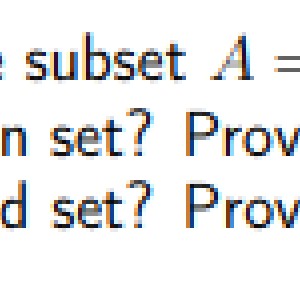real analysis
Answer
Answers can only be viewed under the following conditions:
- The questioner was satisfied with and accepted the answer, or
- The answer was evaluated as being 100% correct by the judge.
 Mathe
Mathe
3.7K
The answer is accepted.
Join Matchmaticians Affiliate Marketing
Program to earn up to a 50% commission on every question that your affiliated users ask or answer.
- answered
- 1296 views
- $10.00
Related Questions
- What is the Lebesgue density of $A$ and $B$ which answers a previous question?
- Prove the uniqueness of a sequence using a norm inequality.
- Prove Holder-continuity for $\mu_\lambda (x) = \sum\limits_{n=1}^\infty \frac{ \cos(2^n x)}{2^{n \lambda} }$
- [Real Analysis] Show that $B$ is countable.
- How do we define this choice function using mathematical notation?
- [Real Analysis] Let $a>1$ and $K>0$. Show that there exists $n_0∈N$ such that $a^{n_0}>K$.
- [Real Analysis] Show that the set $A$ is uncountable. Use this result to show that ${\displaystyle\mathbb {R}}$ is uncountable.
- real analysis


rage could you check my other questions as well if its worth your time ?